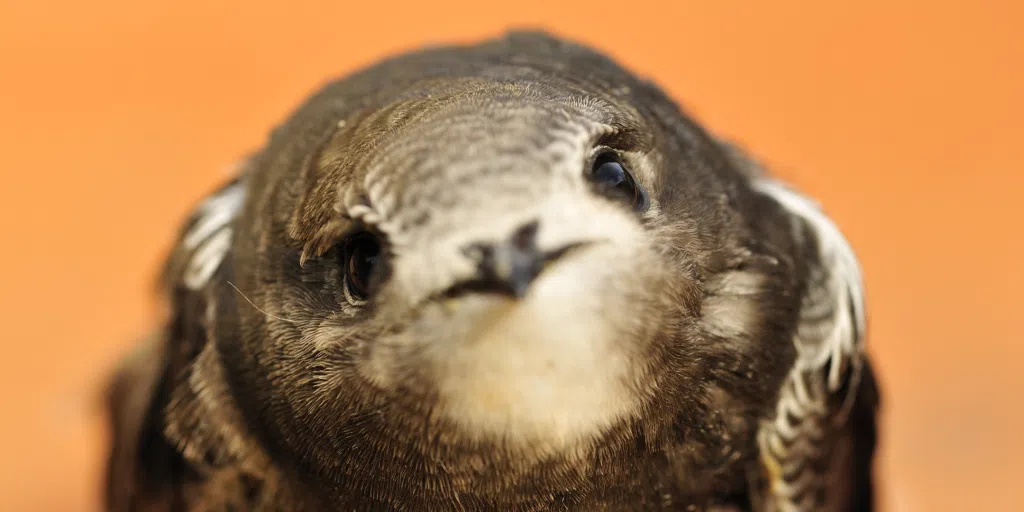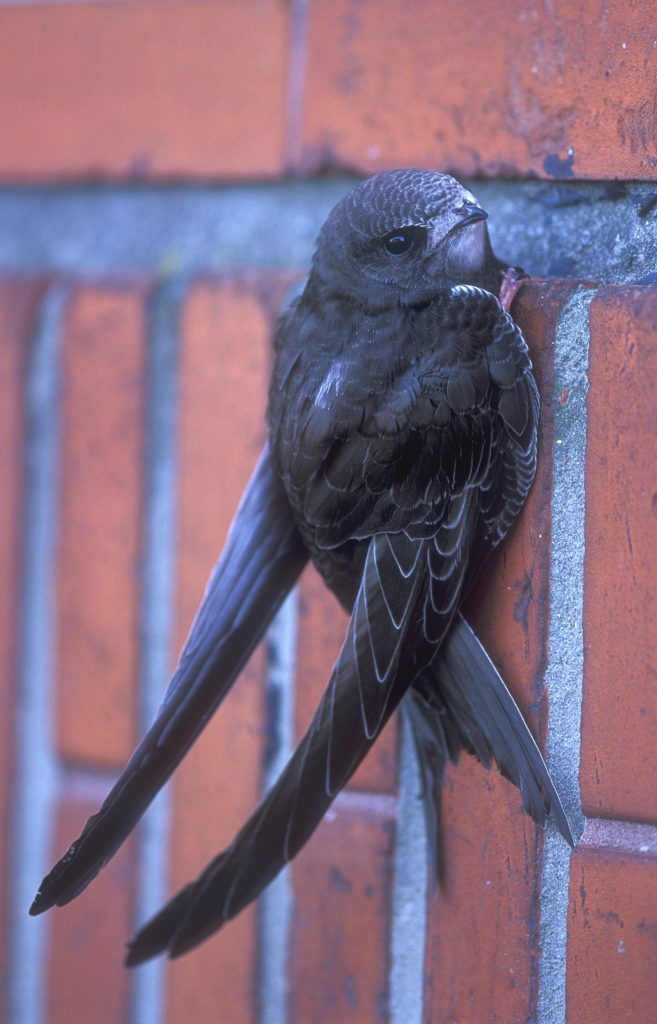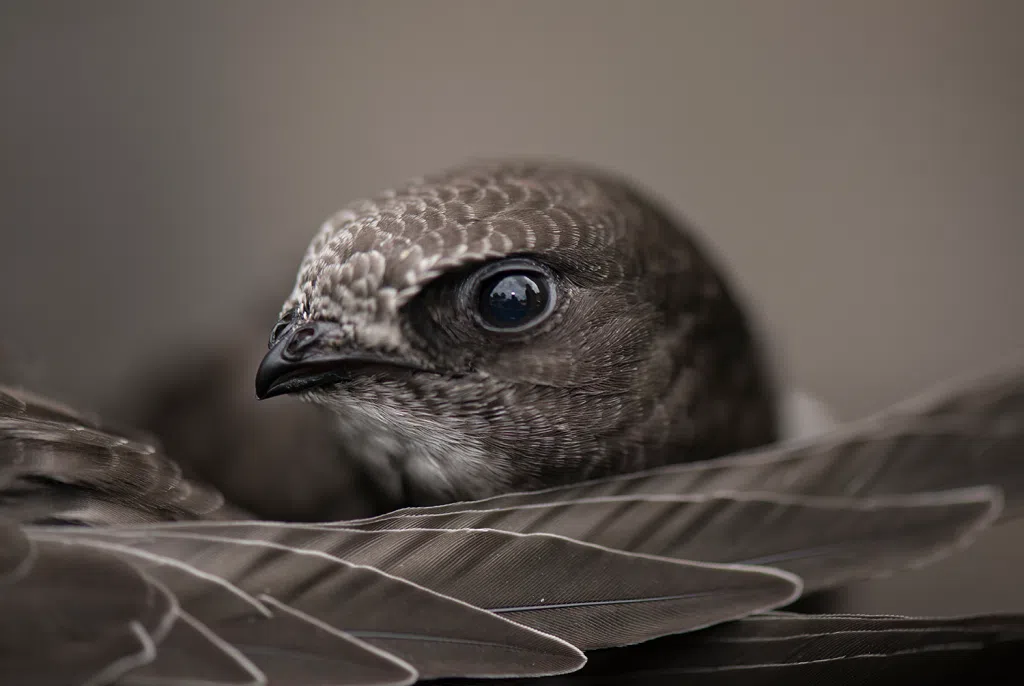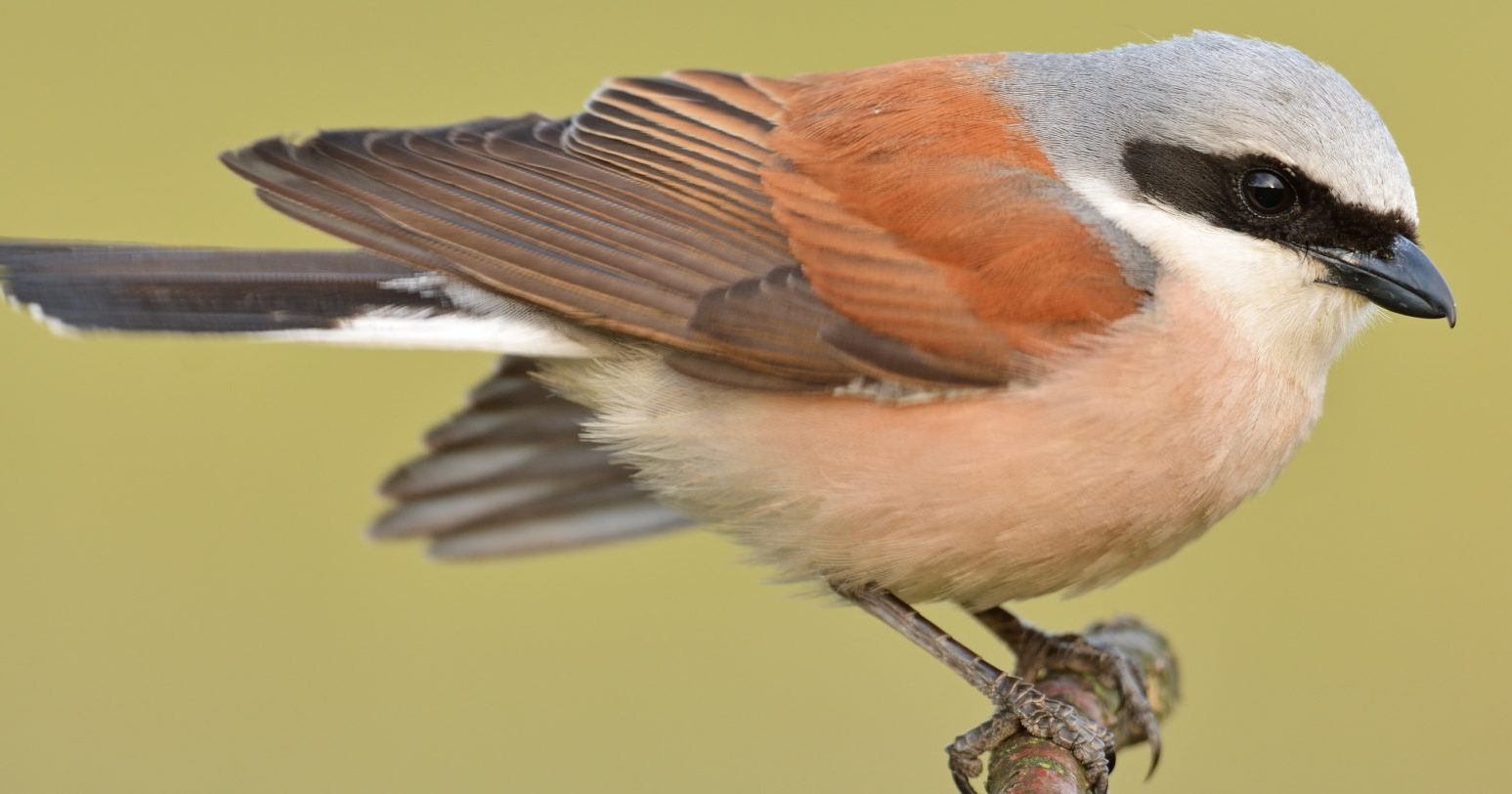Migratory bird of the month: The Common Swift

Common Swifts spend most of their life in the air. They are in fact the real kings and queens of the skies while they dance their way into our hearts.
Key Facts
- Latin name: Apus apus
- IUCN status: Least Concern1
- Global population: The global population is estimated at 95,000,000-164,999,999 mature individuals. The European population is estimated at 19,100,000-32,500,000 pairs, which equates to 38,200,000-65,000,000 mature individuals.2
- Migration Route: Afro-Palearctic flyway
Description
- Wingspan: 36-40 cm
- Life span: Up to 20 years
- Distinct features: Sleek, dark plumage, scythe-like wings, and a forked tail
- Favourite food: Insects caught in flight
- Top Speed: Up to 111 km/h
- Habitat: Urban areas, cliffs, and woodlands, and potentially nesting on your building
Flight for survival
The Common Swift, with its dark, streamlined body and high-pitched beeping scream, is a familiar sight in summer skies for Europeans and Asians. These birds spend almost their entire lives in flight, eating, drinking, and even sleeping on the wing. During the breeding season, you can find them nesting in crevices of buildings or cliffs. When the breeding season ends, they embark on a long migration to sub-Saharan Africa, traversing thousands of kilometers with impressive speed and endurance.
However, the Common Swift faces increasing threats. Urbanization and modern building practices often eliminate nesting sites, as buildings are sealed off or renovated. The use of pesticides reduces the abundance of their insect prey, making food scarce. Climate change also poses a threat, altering insect populations and affecting weather patterns that are critical for their migration and breeding.

BirdLife’s work
The BirdLife Partnership is committed to monitoring and preserving swift populations and their habitats. The “Save Our Swifts” initiative focuses on preserving nesting sites in urban areas, promoting swift-friendly building practices, and raising awareness about the ecological importance of these birds.
Many BirdLife Partners work to ensure that the rehabilitation and construction of buildings are compatible with the conservation of Swifts and other urban fauna. Some have developed simple solutions in a technical guidance document for architects, developers, and individuals, in Spanish (by our Spanish Partner SEO/BirdLife), and in French (by our French Partner LPO).
But you can help protect the Swift at home, too! Our German Partner, NABU, and our Partner in the UK, RSPB, both offer guides on how to set up a swift nesting box at home. In doing so, you will not only support the Common Swifts but will also become an advocate for wildlife and support conservation organizations. By preserving the Swift’s habitats and ensuring a plentiful supply of insects, we can help secure a future for these amazing birds.
How to set up you Swift nesting box in German: https://www.nabu.de/tiere-und-pflanzen/voegel/helfen/nistkaesten/01103.html
How to set up you Swift nesting box in English: https://www.rspb.org.uk/helping-nature/what-you-can-do/activities/create-a-high-home-for-swifts


Interesting facts
The real kings and queens of the sky
Common Swifts are known for their remarkable ability to stay airborne for almost their entire lives. When young Swifts leave the nest, they often do not land again for 2-3 years until they are ready to breed. They eat, drink, sleep, and mate on the wing. For sleep, they can alternate between the two hemispheres of their brain, so one part always stays active to ensure a safe flight even during resting.
Did you know that their scientific name “apus” comes from Greek and means “without feet”? We can calm you down as we assure you that they do have “feet” and they are appropriate to their body size. But as you can barely see their claws during their evening dances in the sky, rumors have it that their feet might have become smaller due to their airborne life.

High-Speed and Long-distance Migration
During migration, swifts can cover 570 and up to 800 km in a single day,3 flying at altitudes up to 2500 meters.4 Their long, pointed wings allow for exceptional speed and manoeuvrability. The swift has one of the highest migration speeds in comparison to other migratory bird species and some anecdotal references about the distances even say they’d be flying an equivalent of 5 times to the moon.
Flying in company
When the swifts perform their beautiful aerial dances, they are never alone. Apart from other swifts, they have one or several freeloaders traveling with them. The Common Swift louse fly (Crataerina pallida), a blood-sucking flightless parasite specialized on the Common Swift as its host, is their constant companion. Although the birds turn and fly their rounds, the flat-bodied and crab-like ectoparasite clings perfectly to its host. Despite their parasitic nature, they don’t pose any detrimental effects to their host. It is believed that almost all swifts host these freeloaders, who can become significantly big to see them crawling in the feathers. Little is known about the relationship between these two and it is yet to see if there might be any benefits to the swifts.
If you suffer from insect phobia, fear not; these little companions are very loyal and in lifelong relationships with their swifts.
Who are the Swifties?
The love for the Common Swift has skyrocketed publicly over the last few years since the threats for the species are increasing. We will never forget environmentalist and British writer Hannah Bourne-Taylor who covered herself in birdy body paint, screaming from the top of her lungs to protect swifts as part of her feather speech campaign.
But the most enthusiastic and popular swift supporter is probably Jane Goodwall. We are amazed that this conservation icon and animal welfare activist is a groupie for our Common Swifts.
Check out this Video with Jane on World Swift Day >https://youtu.be/Hjl_TUJEUEQ
Cover picture by Yves Adams
You might also be interested in:
 | Stichting BirdLife Europe gratefully acknowledges financial support from the European Commission. All content and opinions expressed on these pages are solely those of Stichting BirdLife Europe. The European Commission is not responsible for any use that may be made of the information it contains. |
- https://www.iucnredlist.org/species/22686800/86111691 ↩︎
- BirdLife International (2024) Species factsheet: Common Swift Apus apus. Downloaded from https://datazone.birdlife.org/species/factsheet/common-swift-apus-apus on 30/07/2024. ↩︎
- S. Åkesson, G. Bianco (2021) Wind-assisted sprint migration in northern swifts, DOI: https://doi.org/10.1016/j.isci.2021.102474 ↩︎
- Ander Hedenstroem et.al.(2016) Annual 10-Month Aerial Life Phase in the Common Swift Apus apus ↩︎









